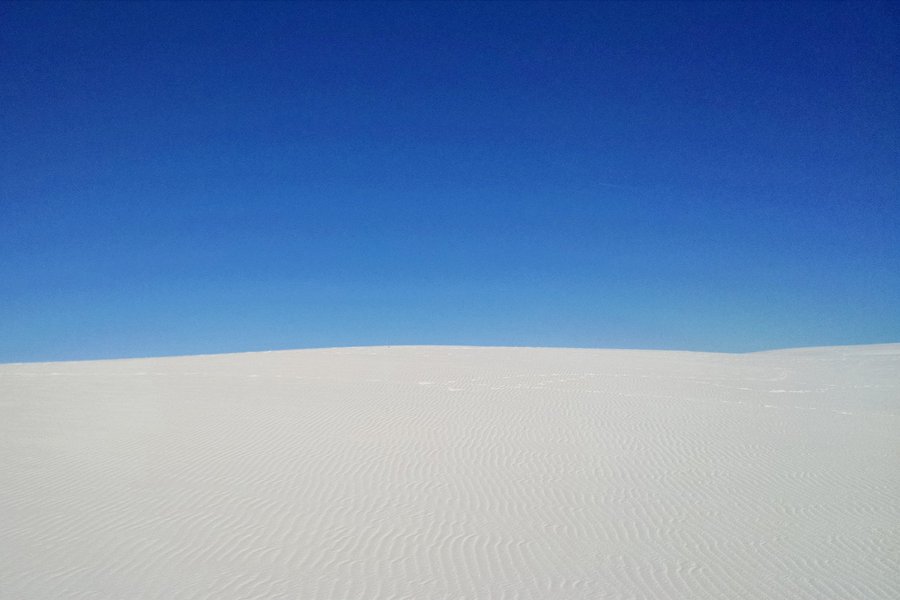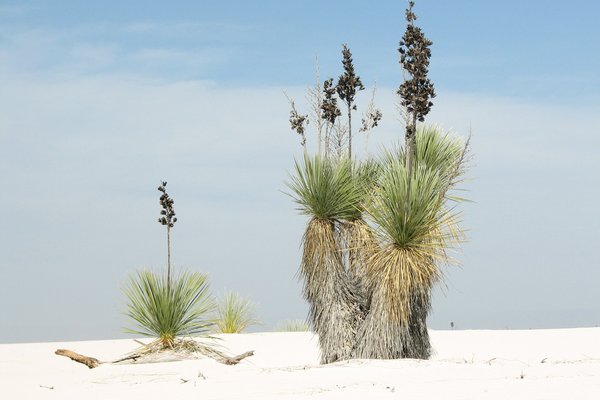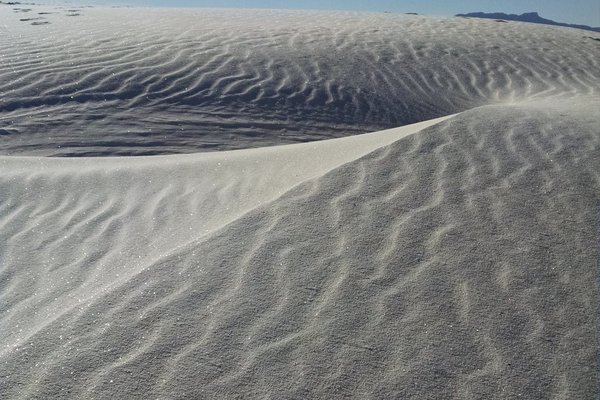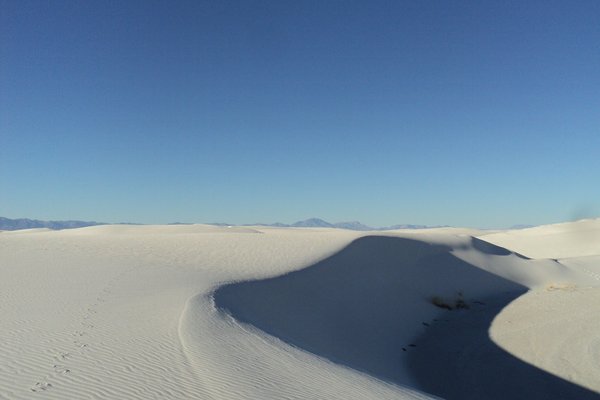United States of America
White Sands National Monument
White Sands National Monument preserves the world’s largest surface deposit of gypsum sand.
This gypsum desert in New Mexico contains dunes of sand encompassing more than 176,000 acres, of which over 143,000 acres are protected, and supports an ecosystem of plants and animals that have adjusted to its harsh environment. White Sands was officially designated as a United States National Park in December 2019, replacing its status as a national monument
Site Info
Official Information
- Full Name
- White Sands National Monument (ID: 5254)
- Country
- United States of America
- Status
-
On tentative list 2008
Site history
History of White Sands National Monument
- 2008: Added to Tentative List
- Added to tentative list
- Type
- Natural
- Criteria
Links
- UNESCO
- whc.unesco.org
All Links
UNESCO.org
- whc.unesco.org — whc.unesco.org
News Article
- Oct. 7, 2023 independent.co.uk — Oldest evidence of humans in Americas confirmed by new research
- Dec. 23, 2019 mashable.com — White Sands National Monument in New Mexico is now White Sands National Park.
Community Information
- Community Category
- Natural landscape: Desert
Travel Information
Recent Connections
News
- independent.co.uk 10/07/2023
- Oldest evidence of humans in Ameri…
- mashable.com 12/23/2019
- White Sands National Monument in N…
Recent Visitors
Visitors of White Sands National Monument
- Alexander Lehmann
- Alex Baranda
- Ammon Watkins
- Ana
- Anna Wludarska
- Artsybrea
- AYB
- Badwater
- Bill Maurmann
- Bin
- brornt
- Cluckily
- Cobaltrage
- Corinne Vail
- Daniel R-F
- Dan Pettigrew
- Dennis Nicklaus
- Don Irwin
- Els Slots
- Erik G
- Errol Neo
- Frederik Dawson
- GeorgeIng61
- Hdhuntphotography
- Ingemar Eriksson
- Jacob Otten
- Jason Boulette
- Javier Coro
- Jay T
- Justin Rickey
- Kelly Rogers
- Kim, Soo-youn
- Kurt Lauer
- Kyle Magnuson
- Lara Adler
- Marty
- MichaelH
- MMM
- Mstrebl1990
- Nick Kuzmyak
- Pink Bunny
- Ralf Regele
- Randi Thomsen
- Roman Bruehwiler
- Ryan Gentry
- sbshipway
- Sergio Arjona
- Stanimir
- Svein Elias
- SymonMajewski
- Thomas van der Walt
- Tim Allen
- Timothy C Easton
- tony0001
- Tsunami
- Velvetlapis
- Walter
- Wo_ko
- Xiquinho Silva
- Zach
- ZCTLife
Community Reviews
Show full reviews
Not a lot to do here but what you can do is pretty cool. Sledding and hiking through the dunes is sandy but fun. Compared to sand, gypsum isn’t as hot so you can go barefoot, even in the hotter times. Nearby Townes are pretty dumpy but a stay in nearby Cloudcroft would be the ideal way to break up a road trip here.
We paired this trip from El Paso to Guadalupe mountains, Carlsbad caverns (another unesco site) and White Sands
Keep reading 0 comments
White Sands is a marvel, an extremely underrated park, oops "National Monument", that should and probably would be inscribed instantly if not for the use of the US Army missile testing in the area!!
Start out with the usual visitor center. The video introduction to the park is wonderful to prepare you, the slides at the exhibit a little basic, the gypsum sandbox to fake footprints is cute. The gift shop is actually bigger than the visitor center. The park (covered by the annual interagency card) is a further few miles in. I hiked the first few short trails but it didn't seem so impressive, also I got totally distracted by some dude letting his dog off the leash and trampling the bushes. The "back" side of the park is the real gem. Leave the crowds and sand plows behind to see blindingly white dunes. Take the grueling 3h Alkali Flats Trail over these dunes and through untouched (since their last shift) areas, spotting animals (only saw a mouse and lots of white earless lizards) and taking plenty of pics. The dunes keep shifting so each hike is slightly different. Pro tip right now: do this really early morning! You can also do a sunset walk with a ranger but I didn't feel like hanging around the park all day for 7pm. This is not the same 3h hike btw.
White earless lizards are one of the aspects the park has for inscription: adapt to survive, don't blend …
Keep reading 0 commentsKyle Magnuson
Largest Gypsum Dune Field in the World
White Sands National Monument (On tentative list)

My visit in late November to White Sands National Park is truly a unique experience. White Sands is an easy inscription, there is little to persuade in any nomination file about OUV. The largest Gypsum Sand Dunes in the world (by far), and some of the most unique symbiotic relationships seen on this planet are found in this remote region of New Mexico. White Sands is surely of exceptional value and a missing gap on the world heritage list.
However, there are different factors that may affect this nomination. Firstly, much of the monument is surrounded by the White Sands Missile Range, which is active and causes closures to the monument itself, and the major highway that crosses Southern New Mexico. In fact, there is a "cooperative use" zone inside the national park that is periodically used by the US Military! Furthermore, there is a US Air Force Base nearby and an Immigration checkpoint in the immediate vicinity of the park entrance. US Nomination Files rarely include buffer zones in the first place. I cannot imagine UNESCO & IUCN will have nothing to say about potential negative factors affecting the property.
My visit lasted 4 hours. The hike at the end of Dunes Drive is nothing short of sublime. Stark white dunes all to yourself, with 360 degree panoramas that are stunning, will leave most visitors giddy with excitement. My wife and I also chose a guided sunset hike; here I learned about the unique symbiotic relationships in this habitat …
Keep reading 0 comments
It was very fascinating to visit White Sands, also to go there, I took the way from Carlsbad Caverns. The feeling that I remember was the very warm surface but if I just dug some decimeters down, it was rather cold. Perhaps there must be some more to show and I also remember that it was some kind of military area(1994) and the military could close it down when they needed. Perhaps not so good in a HHS.
Keep reading 0 comments


